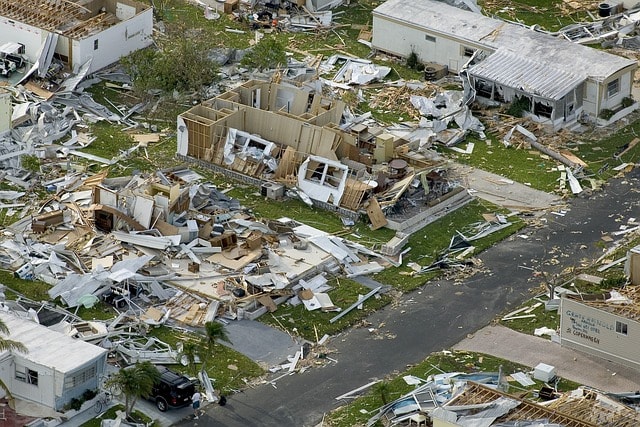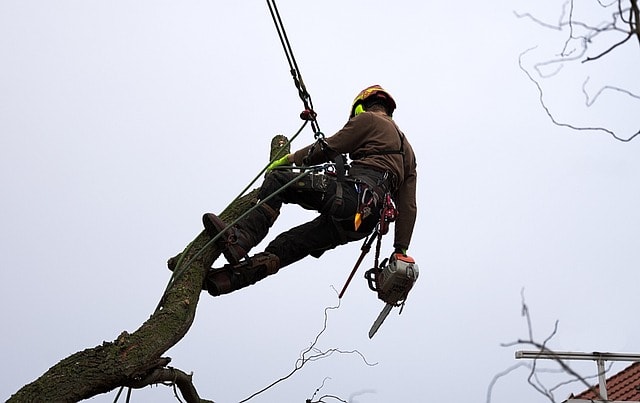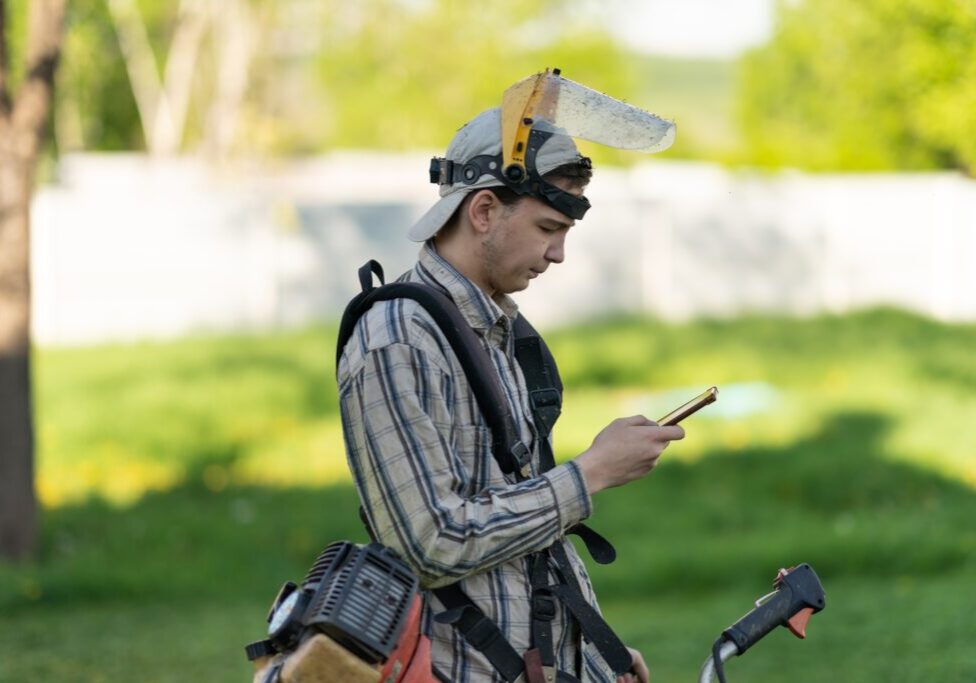How Catastrophic Events Impact the Tree Care Industry

Catastrophic events and extreme weather conditions , such as hurricanes, tornadoes, wildfires, ice storms, and even extreme heat waves, have a profound impact on the tree service industry. These severe weather events can cause widespread damage to trees and significantly disrupt the operations of tree care businesses, but also present unprecedented opportunities to many in the tree industry.
The Impact of Natural Disasters on Trees:
- Wind Damage: High winds, a common occurrence during tropical cyclones and other storm events, can cause significant damage to trees. This includes:
- Branch loss: Large branches can be broken or uprooted, potentially causing damage to property and injuring people.
- Uprooting: Young trees and trees with weakened or shallow root systems are particularly susceptible to uprooting during high winds and extreme weather conditions.
- Structural failure: Trees can experience structural failure, resulting in the breakage of main branches or even the entire tree.
- Ice Storm Damage: Ice storms can cause significant damage to trees by:
- Branch breakage: The weight of accumulated ice can cause branches to break, especially on trees with weak wood, such as some tree species.
- Tree death: Heavy ice can also lead to tree death or and significant tree failure by girdling branches and preventing the flow of nutrients.
- Fire Damage: Wildfires can directly affect trees by:
- Scorching bark: Intense heat can scorch the bark, damaging the tree’s vascular system.
- Root damage: Fire can damage or destroy tree roots, making the tree more susceptible to windthrow and other hazards.
- Flooding: Prolonged periods of heavy rain and flooding can:
- Weaken root systems: Waterlogged soil can deprive tree roots of oxygen, leading to root decay and weakening the tree’s structural integrity.
- Increase disease susceptibility: Flooding can increase the risk of fungal diseases and other infections.
- Lightning Damage: Lightning strikes can cause:
- Bark stripping: The intense heat of a lightning strike can strip bark from the tree, exposing the underlying wood to decay.
- Internal damage: Lightning can cause internal damage to the tree, even if there are no visible external signs of injury.
The Impact on the Tree Care Industry:
- Increased Demand: In many cases, working along side utility work, catastrophic events typically lead to a surge in demand for tree care services, including:
- Tree removal: Removing downed trees, hazardous trees, and trees that pose a threat to public safety.
- Tree trimming: Removing damaged branches and limbs to improve tree health and reduce the risk of future damage.
- Storm response: Providing emergency services such as clearing roads and restoring access to essential services.
- Challenges for Tree Care Workers:
- Hazardous Conditions: Working in the aftermath of a storm can be extremely hazardous, with potential dangers such as:
- Downed power lines: Posing a significant risk of electrocution.
- Debris: Fallen trees, branches, and other debris can create hazardous working conditions.
- Weather-related hazards: Extreme heat, cold, and rain can increase the risk of injury and illness for tree care workers.
- Hazardous Conditions: Working in the aftermath of a storm can be extremely hazardous, with potential dangers such as:
- Occupational Safety and Health: The National Institute for Occupational Safety and Health (NIOSH) recognizes the inherent dangers associated with tree work, highlighting the importance of occupational safety and the use of appropriate personal protective equipment (PPE) for all tree care workers.
- Injury Rates: The Bureau of Labor Statistics reports that the tree industry has one of the highest rates of nonfatal injuries among all industries in the United States, calculating out to three times the average rate.
- Importance of Safety: The use of appropriate personal protective equipment (PPE), such as helmets, eye protection, and gloves, is crucial for the safety of tree care workers.
- Financial Implications:
- Increased Costs: Increased demand for emergency services can lead to increased costs for businesses, including:
- Labor costs: Overtime pay, hiring additional staff, and paying hazard pay to workers.
- Equipment costs: Increased wear and tear on equipment, as well as the need for repairs and replacements.
- Travel costs: Increased travel expenses for crews traveling to affected areas.
- Insurance Coverage: Adequate insurance coverage is essential for tree care businesses to mitigate the financial risks associated with storm damage and potential liabilities.
- Increased Costs: Increased demand for emergency services can lead to increased costs for businesses, including:
Navigating the Aftermath: A Guide for Certified Arborists
The sudden surge in demand, logistical hurdles, and the potential for financial strain can overwhelm even the most well-established businesses. However, with careful planning and a proactive approach, tree care companies can not only effectively serve their communities in times of need but also solidify their position as essential service providers.
1. Building a Resilient Workforce
A successful emergency response hinges on a well-prepared team. This involves:
- Assembling an Internal Response Team: Designate key personnel responsible for emergency response. Conduct regular drills and simulations to test your plan.
- Specialized Training: Tree care workers need specialized training in safety protocols and areas such as:
- Occupational safety and health
- Hazard tree identification
- Tree climbing techniques
- Use of aerial lifts and other equipment
- Specialized Training: Tree care workers need specialized training in safety protocols and areas such as:
- Leveraging External Resources: Establish a network of reliable temporary labor providers, such as staffing agencies and arborist associations. Explore partnerships with other tree care companies for mutual aid during emergencies.
- Industry Associations: Organizations such as the Tree Care Industry Association play a crucial role in promoting professional development, setting industry standards, and advocating for the interests of tree care professionals.
2. Prioritizing Logistics, Operations, and Efficiency
Efficient logistics are paramount for a swift and effective response.
- Travel and Accommodation: Secure reliable transportation for crews and equipment, including rental trucks and trailers. Arrange comfortable and safe temporary housing for traveling crews, such as hotels, campgrounds, or RV parks. Plan efficient travel routes and rest stops to minimize fatigue and maximize productivity.
- Balancing Daily Operations: Prioritize emergency response calls while maintaining service to existing clients. Implement a robust scheduling system and project management software to effectively manage crews and resources.
- Coordinate with Local Authorities:
- Establish strong working relationships with local emergency management agencies, utility companies (such as power and gas companies), law enforcement, and public works departments.
- Participate in local emergency response planning meetings to understand the overall response strategy and coordinate your efforts with other agencies.
- Communicate regularly with authorities to provide updates on your progress, identify areas of need, and address any safety concerns.
- Utilize Technology:
- GPS Tracking: Implement GPS tracking systems for all vehicles and equipment. This allows for real-time monitoring of crew locations, enabling dispatchers to quickly and efficiently assign jobs and respond to changing situations.
- Project Management Software: Utilize cloud-based project management software to:
- Track job progress, assign tasks, and monitor resource allocation.
- Share important information, such as safety alerts, weather updates, and customer contact information, with all team members.
- Generate reports on work completed, labor costs, and equipment usage.
- GPS Mapping: Collect detailed documentation on your customers’ plants and tree health using GPS inventory mapping software.
- Communication Platforms: Utilize robust communication platforms, such as two-way radios, mobile phones, and dedicated messaging apps, to ensure clear and timely communication among crews, dispatchers, and management.
3. Pricing Strategies and Financial Considerations
Transparent and competitive pricing is crucial for both business sustainability and customer satisfaction.
- Factor in All Costs: Develop a pricing model that accurately reflects the true cost of emergency response services, including:
- Travel costs (fuel, mileage)
- Accommodation costs for crews
- Hazard pay for increased risk
- Equipment rental and maintenance
- Emergency response surcharges
- Robust Insurance Coverage: Obtain adequate insurance coverage, including liability, workers’ compensation, and equipment insurance, to protect your business from unforeseen risks.
4. Marketing and Business Development
Building strong relationships within the community is essential for long-term success.
- Network Strategically: Cultivate relationships with insurance companies, emergency management agencies, and other industry professionals.
- Increase Visibility: Participate in industry events and trade shows to showcase your emergency response capabilities.
- Community Engagement: Consider partnering with local charities to support disaster relief efforts or even offering services pro bono. This demonstrates your commitment to the community and can enhance your reputation.
- Leverage Digital Marketing: Utilize online platforms such as social media and search engine optimization to increase your visibility and reach potential clients in disaster-prone areas.
5. The Power of Consumer Financing
Offering consumer financing options can significantly benefit both your business and your customers.
- Ease Financial Burden: Financing allows homeowners to cover immediate costs while awaiting insurance claims, reducing financial stress during a challenging time.
- Improve Customer Satisfaction: By providing flexible payment options, you demonstrate a commitment to customer satisfaction and build long-term relationships.
- Boost Cash Flow: Financing can improve your business’s cash flow, enabling you to invest in resources and continue to provide essential services.
Download Arborgold’s free resource on Consumer Financing to learn more about how this valuable tool can benefit your tree care business.
The Role of the Tree Care Industry in Community Resilience:
- Protecting Urban Forests: Urban forests provide numerous benefits to communities, including improved air quality, reduced stormwater runoff, and increased property values.
- Public Health: The health and well-being of urban forests are crucial for public health.
- Disease Control: Trees play a vital role in mitigating the impacts of climate change, such as increased temperatures and changes in precipitation patterns.
The Impact of Climate Change:
- Increased Frequency and Severity: According to the National Oceanic and Atmospheric Administration (NOAA), climate change is expected to increase the frequency and severity of extreme weather events, such as hurricanes, droughts, and wildfires, posing significant challenges for the long-term health of urban forests.
- Adapting to Change: The tree care industry must adapt to these changing conditions by:
- Selecting climate-resilient tree species: Planting trees that are better adapted to withstand extreme temperatures, drought, and other climate-related stresses.
- Developing new techniques: Developing new techniques for tree care and maintenance that are more sustainable and resilient to climate change.
Catastrophic events pose significant challenges to the tree care industry, but they also present opportunities for innovation and growth. By embracing a proactive approach to risk management, investing in employee safety and training, and adapting to the changing climate, you can not only effectively serve your community during times of crisis but also position your business for long-term growth and success.
Share this resource







